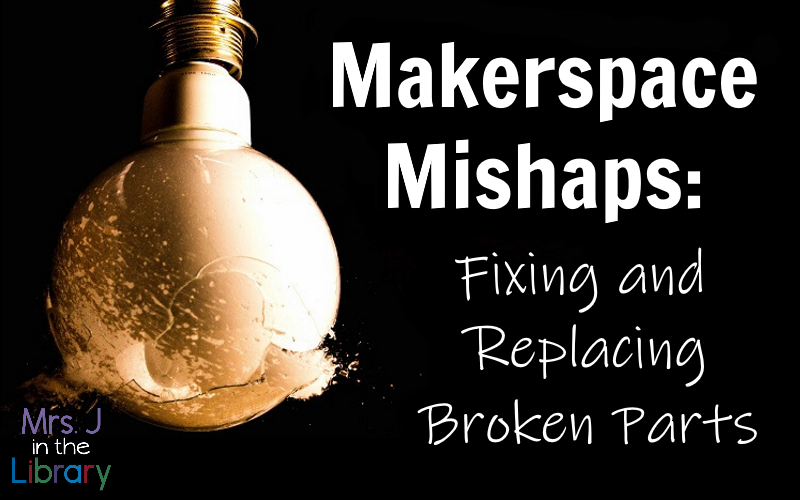When you start a makerspace and begin letting students build things that move, light up, and generally do cool things, eventually something will go wrong. Of course, because Murphy’s Law of Education is always in effect, that’s usually when an administrator walks in.
When that happens, you just have to smile and ask students, “Now what did we learn from this?” and hope that the observing administrator will see the learning along with the so-called “failure” of the project.
Also, you should always have some bandages, gauze, and no-latex gloves on hand, just in case. Thankfully, I have yet to use my stash of first-aid supplies for a makerspace accident.

If nothing else, parts will occasionally need to be replaced, and that’s something I’ve learned the hard way that you need to include in your budget. If you can buy a gift card with your budget funds, it comes in really handy for replacing parts as needed.
Disclaimer: This post contains affiliate links, which means if you purchase an item after clicking the link, I will receive a small commission. See Disclosures & Disclaimers for more information.
For instance, since starting our makerspace with about 100 littleBits™, these parts have broken:
- 2 fans (a wire broke in both cases) – Both replaced.
- 1 roller switch (repaired 3x with varying levels of success) – Too fragile to replace if/when it breaks for good
- 1 vibration motor (temporarily fixed with solder) – Broke again, Replaced
- 1 wire Bit – Still looking for a replacement wire to fix it (the Bit parts are fine)
- 1 pressure sensor – Not replaced; we have extras
- 1 bend sensor (probably from bending the wrong way) – Not replaced, too fragile
- Every single battery cable that connects the 9-volt batteries to the power Bits – Replaced with these from Adafruit; no problems since then.
To be clear, most of these parts are already fragile, and I think littleBits™ generally makes high quality products. Wires snap pretty easily, but occasionally can be soldered back together. I still haven’t learned to solder yet, but fortunately my husband has saved a Bit or two this way.
Besides learning to solder yourself, Super Glue® or any other plastic glue is a great material for fixing. I’ve also heard of, but haven’t yet tried, using Sugru™, a non-conductive putty that hardens into rubber.
UPDATE: Sugru™ works wonders on littleBits™! Read this new post to find out how to use it to strengthen your littleBits™ and electronic pieces to last longer.
Since I have very limited instructional time with students, I usually end up doing repairs myself, but older students could certainly learn to fix parts too. Especially if you are lucky enough to have a flexible schedule with time for a Maker Club.
It might seem like a lot of budget funds to allocate for your makerspace, and you might be thinking it’s not worth it with tight budgets. For comparison, track the cost and amount of print books replaced simply because the binding wears out, the cover falls off, or it’s worn beyond circulation.
When I did this, I found that I spend WAY more on replacing damaged and worn out books than I do on replacing makerspace materials and fixes. My professional opinion is that if we want to move forward and provide ALL of the types of resources students need to be successful today, we need to invest some of our budget in new programs and ideas, like a makerspace.
If you have a makerspace, I’d love to hear how you fix your components, and how often you need to replace parts. Do you know any tips or tricks? Share them in the comments!